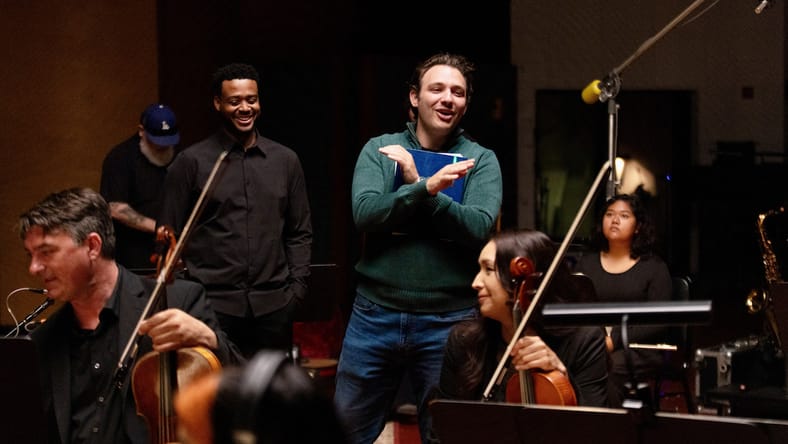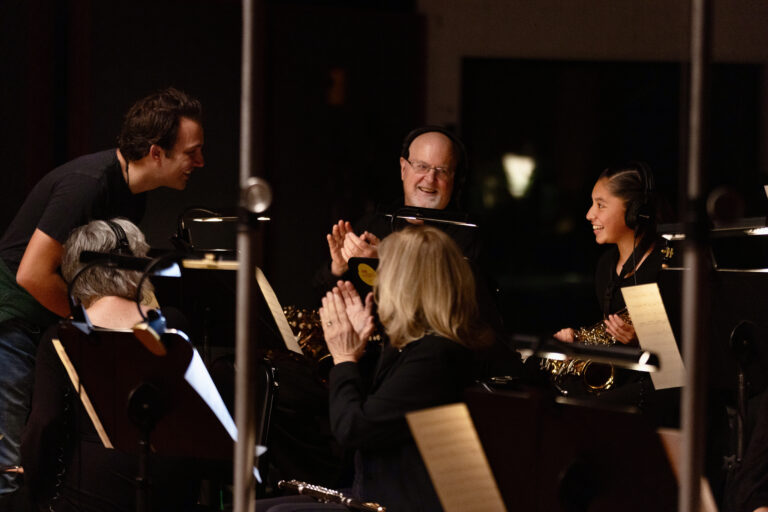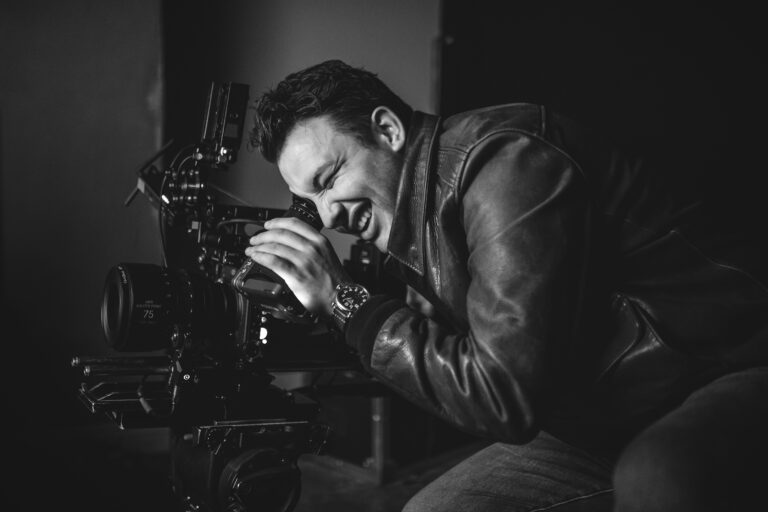
Ben Proudfoot is the co-director, with Kris Bowers, of “The Last Repair Shop,” a story of four unassuming heroes who ensure that no student in the Los Angeles school district is deprived of the joy of music. It also illustrates how music can relieve stress and even provide an escape from poverty. “The Last Repair Shop,” which you can watch below, is Oscar-nominated for Best Documentary Short Film. Proudfoot won an Oscar in 2022 for Best Documentary Short Subject for his film “The Queen of Basketball.” In this piece, he argues for the power of shorts.—M.M.
“When are you going to do features?” As a filmmaker who almost exclusively makes short documentaries, this tired refrain finds me almost daily. People query me as if short documentaries are not enough. Not a destination medium for an artist, but simply a proverbial bunny hill. A student’s format. This commonly held belief is based on the idea that the longer a film is, the more skill and resources it requires and the better and more important the final product is. This idea is wired into almost every filmmaker worldwide, and conveniently fits right into some streamers’ misguided business models to compete to consume as much of the audience’s life as possible.
But would anyone ask a painter, “When do I get to see the big canvas?” Or a songwriter, “What’s going to be your first seven-minuter? Or a novelist, “When’s the 600-pager coming? Certainly there are stories that require and deserve hours to fully expound upon. But most stories that find themselves in feature or series form simply do not need to be that long. And when the average American adult spends more than a third of their waking time watching video in some form, something’s gotta give.
Runtime supremacy is a mindset based in fallacy. As Yoda might say, “Judge me by my TRT, do you?”
There was a time, at the advent of cinema, when short documentaries were all there was. Indeed, the first movies ever made, like the 50-second “Arrival of a Train at La Ciotat,” from 1895, were short documentaries. That was, until our predecessors devised myriad ways to expand what was possible in order to bring audiences to the cinema.
This resulted in longer and longer films and bigger formats, on display last year with Christopher Nolan’s three-hour 70mm IMAX epic Oppenheimer, or Martin Scorsese’s 3-hour-and-26-minute Killers of the Flower Moon, destined to make a bigger footprint than the GDP of certain small countries. (MovieMaker’s style is to put short film titles in quotes and feature titles in italics.)
There’s a place for cinematic marathons. Many have planted their flag atop Mount Epic, and I applaud it, and aspire to it myself! My goal here is not to put down features or cinema that takes its time.
But as documentary filmmakers, perhaps we can muster enough punk-rock perspective to see other mountaintops worth summiting. Ones that we may have overlooked along the way. Some, even, that have yet to be climbed altogether.
I would venture a guess that most documentarians of any stripe got into this line of work for some combination of 1. Truthtelling; 2. Artistic Expression; and 3. Social Impact; and that we want as many people as possible to be moved and made curious by the stories we tell.
If you quiet the mind and simply focus on that core purpose (and free yourself of status quo thinking) — it’s my assertion that there is no better medium than the short documentary distributed on the internet to satisfy those goals.
Let me count the reasons why.
The first headline is that the short documentary is the most financially optimized form of filmmaking. Most short documentaries cost less than 10% of feature documentaries and many have similar (if not greater) impact on our culture. As we watch diversity of perspective and original filmmaking be decimated under the auspices of financial risk aversion, should we not, as artists, be fervently developing formats which minimize financial risk?
Second, more of humanity watches shortform than features and series, largely because their screen is their phone. On the planet Earth, viewership on YouTube (2.1 billion active users) outpaces Netflix (nearly 250 million users) by a factor of eight. The global audience has spoken.
Anecdotally, a cinematographer and frequent collaborator of mine was recently filming in rural Kenya when a young woman asked him the perennial filmmaker question: Is there anything he had shot that she may have seen? He told her probably not, but he had done some (short documentary) work with The New York Times.
“Oh!” She said. “I love the one they did about Kim Hill!” That would be the 14-minute “Kim I Am,” which he shot and I directed. This young woman had no subscriptions to Netflix or Hulu. But she did watch YouTube – a shorts-first platform.
It’s very clear that dense, shortform work is what (especially young) audiences want. And that’s not me being a dwindling attention-span apologist. I believe younger people want shorter, richer storytelling not because they are shallow and impatient, but rather the opposite. They are too media literate to waste time engaging in weak and diluted longform work aimed at soaking up their time or selling them something. The old tricks that the whole machine is built around just ain’t gonna work for how smart the audience is today, let alone tomorrow.

Billy Wilder famously said that his goal as a filmmaker was to tell the audience “something they can take home with them. The kind of film that people see and then go to a drug store to talk about it for half an hour.” Shouldn’t that be our collective aspiration? To spark a conversation amongst the audience? I fear that often longform work is so long audiences don’t make it through without falling asleep, let alone having the energy for a critical discussion afterward.
So if you want to engage in speaking the truth, expressing yourself, and changing minds, why spend years raising six and seven figures, only for the most likely outcome that your film will be buried in the bowels of a quantity-driven SVOD cemetery?
To discount the shortform is to aggressively diminish your palette as an artist and simultaneously starve the audience of precious non-screen life.
“But you can’t make money making short docs and selling them!” True. For now. But, pray tell, who exactly is consistently profiting millions producing and selling feature docs independently? I’d like to see their books.
Like anything in business, you gotta diversify. Our company has found a successful business making un- or low-branded short docs that replace advertisements for forward-thinking brand clients who believe in the format. Don’t worry about besmirching your artistic purity; there’s a major movement afoot to actually make great stuff in partnership with brands. Plus, it’s how the world works.
Also Read: How We Made My So-Called Life and Why It Didn’t Last
Most athletes you admire make most of their money from brand endorsements. George Lucas made his fortune licensing his IP to toys. Even movie theaters make ends meet with popcorn. Acquisition fees are almost the last place filmmakers make money. At any rate, all the major streamers are publicly traded companies (or subsidiaries thereof) with the same purpose in life and fiduciary duty as any brand you may have a qualm about.
Ben Proudfoot on Making an Impact
I would challenge any filmmaker who believes that it takes more craft to hold someone’s attention for 10 hours than to make them cry in nine minutes. Call me crazy, but isn’t the highest aspiration of art elegance? Novices speak of addition. Masters speak of subtraction.
Perhaps most importantly, short documentaries are the most accessible and democratic form of cinema and act as a front door to an increasingly gated movie business. The history of the Academy Awards tells that story. Roger Ross Williams was the first Black director to win an Oscar for his short documentary “Music by Prudence.”Rayka Zehtabchi was the youngest (and first Iranian American) director to win an Oscar when she was 25, for her short documentary “Period. End of Sentence.”
And last year, Kartiki Gonsalves and Guneet Monga made history by winning the first Oscar for an Indian production with their short documentary “The Elephant Whisperers.” (The Oscars is 96 years old and India is 18% of the global population). By greatly reducing cinema’s financial barrier to entry, the short documentary has the power to open the doors of cinema to all the world’s most vital storytellers. (Hint: They don’t all live in Williamsburg and Silver Lake).

Now, I admit that the infrastructure to fund and distribute short documentary cinema is nascent and actively figuring itself out. I’m working on it myself. But isn’t that exciting? That something hasn’t been accomplished before is not proof itself of its impossibility. It’s a call to those with a spirit of adventure who seek the next creative frontier where something genuinely innovative can be done.
Now is the time to lean in and consider:
Is it possible that there is a medium I have consistently underestimated where I can satisfy my purest goals as a filmmaker, meet a significantly larger audience where they are, and spend a fraction of the money?
If you know, you know.
Main image: Ben Proudfoot on the set of “The Last Repair Shop.” Photo courtesy of Breakwater Studios.
Share:

